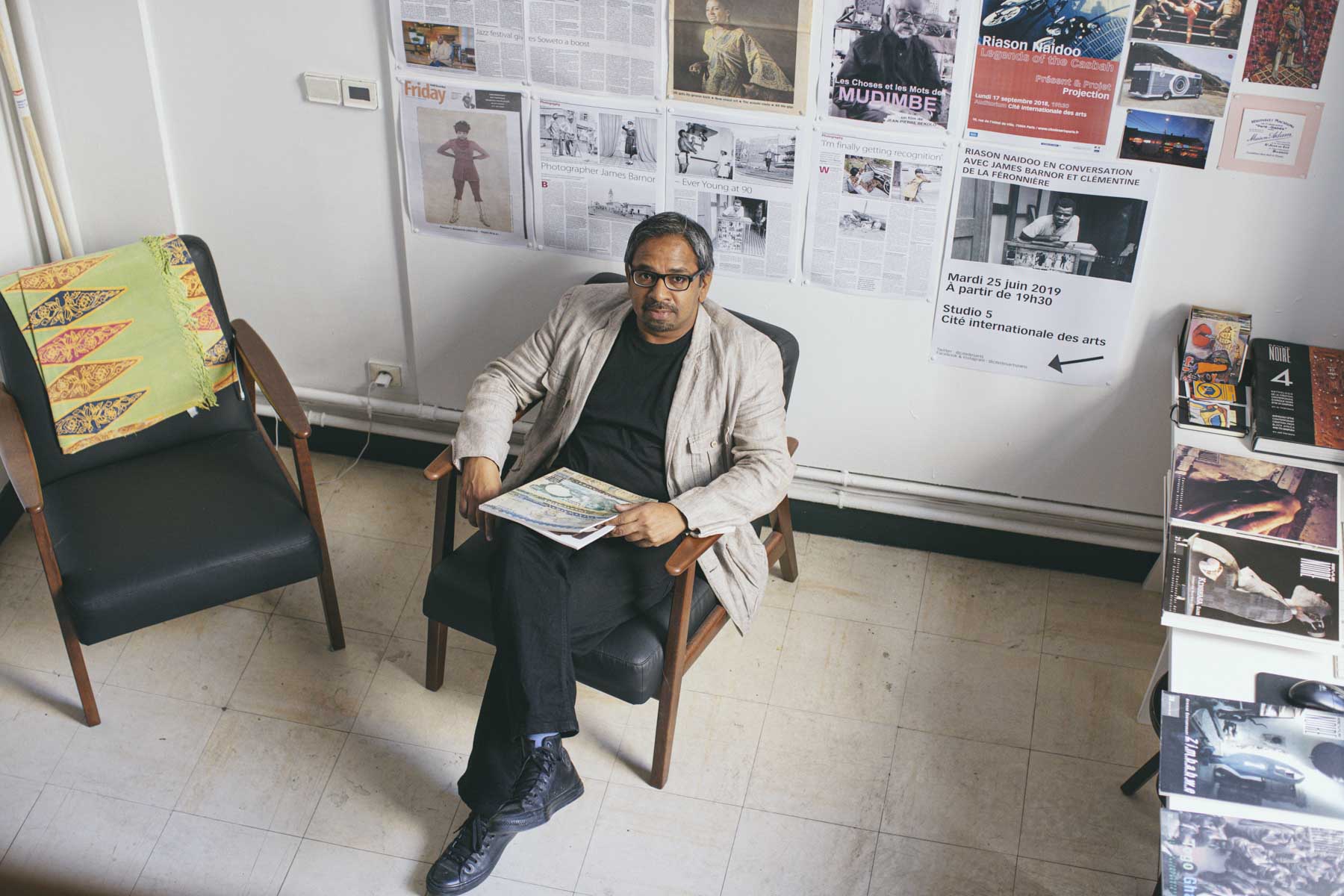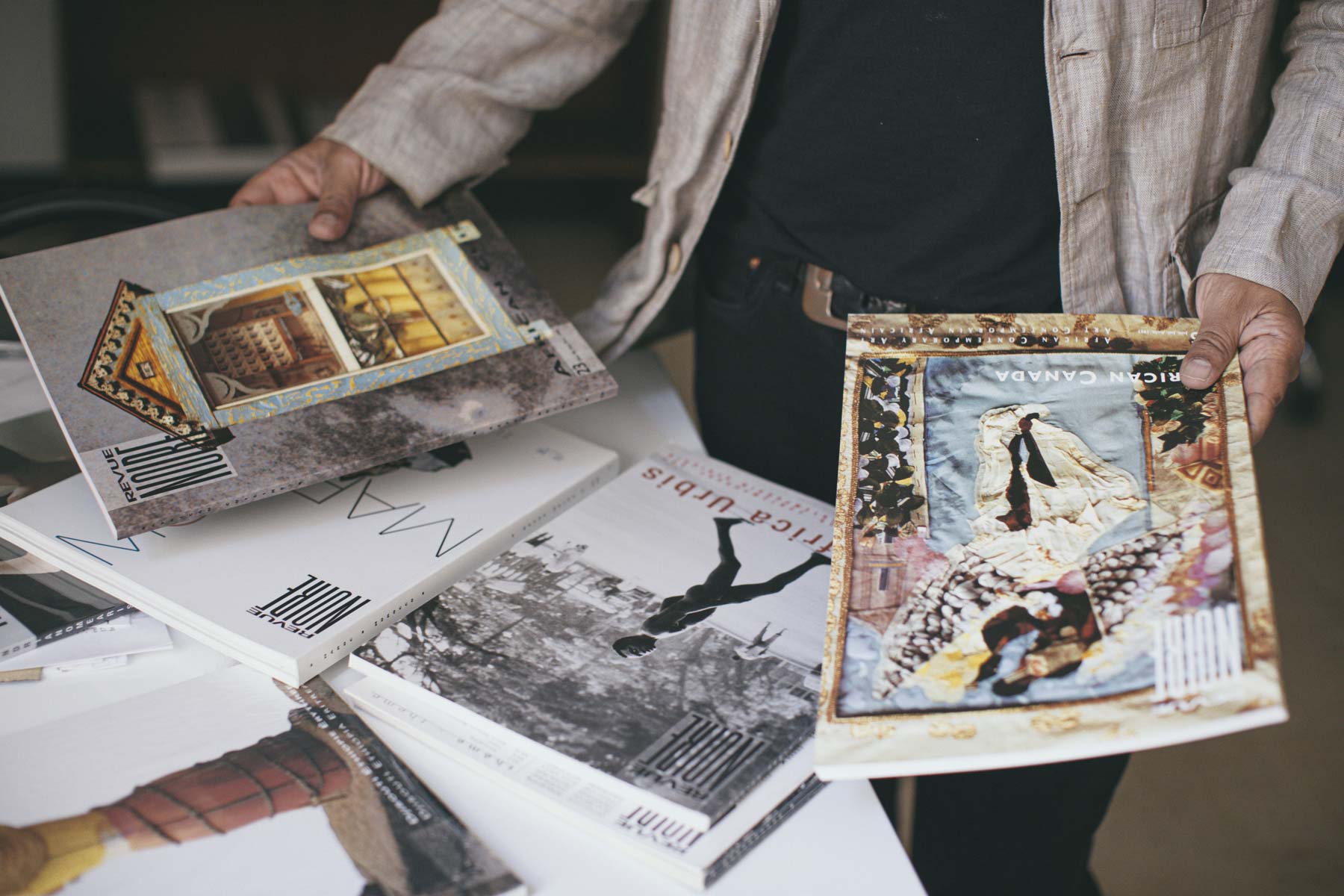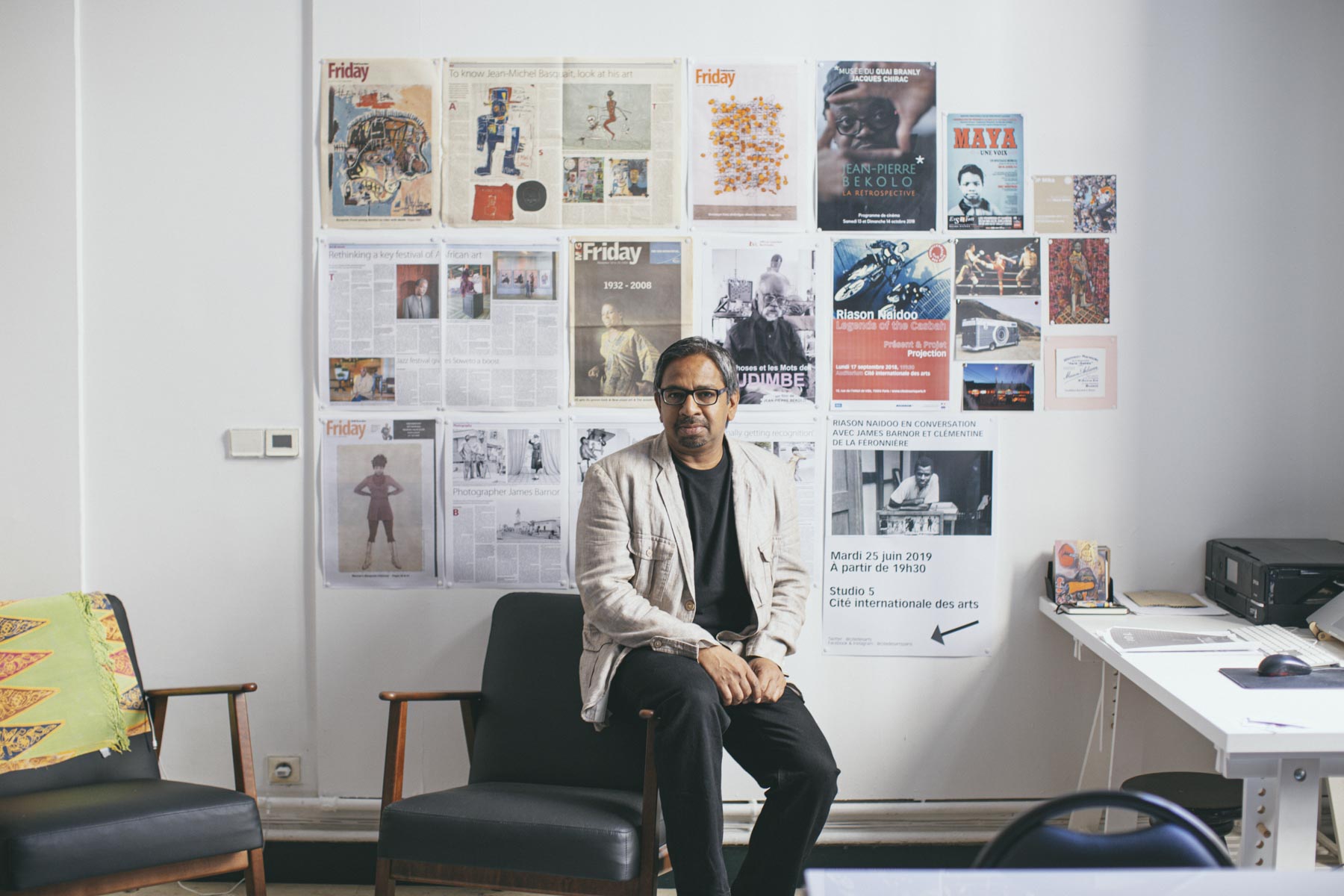INTERVIEW
What changes and developments are to be noted in your work thanks to the residency at the Cité internationale des arts?
An anecdote about your residency at the Cité internationale des arts?
"Apart from my professional practice and research, I have met many artists working in different disciplines and coming from all corners of the globe (90 countries it is said). I’ve also enjoyed some especially brilliant world music concerts at the Cité internationale des arts, I must add. Within the cosmopolitan environment of the Cité we have shared numerous Open Studios, communal lunches and smaller dinners together. Through their artistic practice and via our informal conversations I have learnt a great deal from fellow resident artists of their individual narratives, personal interests and their national histories too. "
BIOGRAPHY
Born in Durban (South Africa), Riason Naidoo is a recipient of the Writing Committees of the Cité internationale des arts following his first residency as a curator through the Institut français (2018). In 2016, Riason Naidoo was awarded the title of "Chevalier de l'ordre des Arts et des Lettres" by the French Ministry of Culture.
He created the public art project Any Given Sunday (2016) in Cape Town that included artists Zanele Muholi, Gabrielle Goliath, Sethembile Msezane, Gerald Machona, Hasan & Husain Essop, Burning Museum, et al.
He was invited faculty to the New York based Independent Curators International (ICI) curatorial workshops held in Dakar (2016), Addis Ababa (2014) and Johannesburg (2013).
In 2012-13 he curated three retrospective exhibitions on Peter Clarke (b.1929-d.2014) in Paris – as part of the South African Season in France – INIVA in London and at the National Gallery in Dakar.
In 2012 Naidoo was co-curator of the 10th edition of the Dak’art biennale in Senegal.
In 2010 he curated the ambitious exhibition 1910-2010: From Pierneef to Gugulective at the South African National Gallery, comprising 580 artworks, that took a fresh look at a century of South African art.
Riason Naidoo curated The Indian in DRUM magazine in the 1950s photo exhibition that has been touring South Africa since 2006 (South African National Gallery, Market Photo Workshop, Durban Art Gallery, Constitutional Hill, etc.) and published his book in 2008.
He co-produced and co-directed, with Damon Heatlie, the documentary Legends of the Casbah (2016) that was inspired by the same exhibition and research.
In 2004, Riason Naidoo curated master photographer Ranjith Kally’s (b.1925-d.2017) first solo exhibition shown at the Goodman Gallery in Johannesburg, a retrospective at the Durban Art Gallery that travelled (2004-07) to the 6th Rencontres de Bamako in Mali, Kunsthalle Wien in Austria, Centre de Cultura Contemporània de Barcelona (CCCB) in Spain and Espace Jeumon in Reunion Island.
He worked with Ernest Pignon-Ernest on a public art project entitled Soweto Warwick (2001-02) in Durban and Johannesburg.
Riason Naidoo is a regular writer on contemporary African art for the Mail & Guardian in South Africa. He is currently engaged in research on writing and curating in contemporary African art.
Apart from his creative projects Riason Naidoo was director of the South African National Gallery (2009-2016); director of the South Africa-Mali Project on the Timbuktu manuscripts (2003-2009); managed artistic projects at the French Institute of South Africa (2001-2003); lectured in drawing and painting at the University of the Witwatersrand (1999-2000); was in charge of art education at the Durban Art Gallery (1996-1999).






